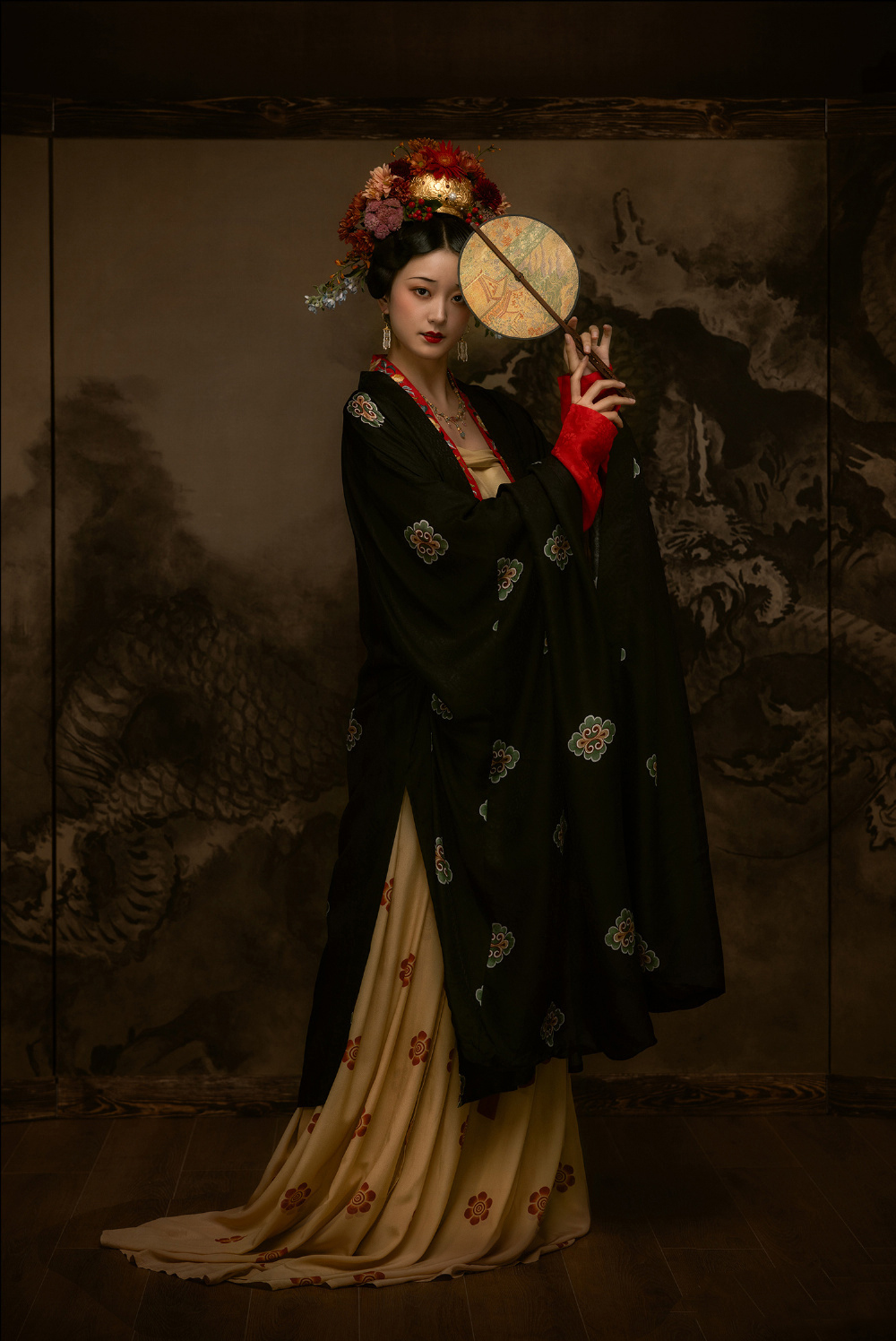Song Dynasty Noblewoman: 宋仕女 | 四龙屏
Dress Provider: 山涧服饰
Music: 鬼卞、銀臨
A Song dynasty noblewoman, she wear a conservative silk woman’s jacket. She stands before a Four Dragon Screen. During the conservative Song dynasty, the elite women often were heavily made up and their hairs were adorned with heavy and elaborate jewelry. Women of the imperial clan often wore more subdued black silk.
Rubbing of the Great Wall around the beginning of the Jin dynasty (1136) Hua Yi Tu (華夷圖, Map of China and the Barbarian Countries) is a map engraved as a stone stele in 1136. It is the earliest surviving map of China that relates China with other foreign states. the Great Wall depicted on the northern edge of the country. During the Jin dynasty they would add several more layers into this defensive network.
Song dynasty Kaifeng. During the Song commerce and learning blossomed across the realm. Technologically Song dynasty took China to new heights.
A RETURN TO TRADITION
The Song Dynasty marked a complex period for women in China, as societal norms and Confucian ideology heavily influenced their roles and status. Women faced numerous challenges due to entrenched gender norms, yet some managed to overcome these barriers to make notable contributions to society.
In Song Dynasty China, women's lives were largely defined by their roles within the family structure. The prevailing Confucian ideology played a crucial role in shaping gender norms. Marriage was a central institution for women during the Song Dynasty. Marriages were often arranged by parents. Despite this, there were instances of love matches and affectionate relationships.
While education was primarily reserved for men, some women from elite families had access to education during the Song Dynasty. Women of the literati class were sometimes taught to read and write, usually by family members. This education focused on practical skills like calligraphy and literature.
Women in the Song Dynasty made significant economic contributions, especially in rural areas. While men often engaged in agricultural work, women played essential roles in domestic industries such as weaving, spinning, and silk production.
BEGINNING OF FOOTBINDING
One of the most controversial and enduring practices during the Song Dynasty was footbinding. Originating among the upper class, footbinding involved tightly binding the feet of young girls to prevent natural growth, resulting in small, deformed feet. Though the practice was widespread among the privilidged families, it was not universal, and some regions (especially rural regions) and social classes did not partake in this tradition.
Thank you to my Patrons who has contributed $10 and above: You made this happen!
➢ ☯ MK Celahir
➢ ☯ Muramasa
➢ ☯ Thomas Vieira
➢ ☯ Kevin
➢ ☯ Vincent Ho (FerrumFlos1st)
➢ ☯ BurenErdene Altankhuyag
➢ ☯ Stephen D Rynerson
➢ ☯ Michael Lam
➢ ☯ Peter Hellman
➢ ☯ SunB



.jpg)
%20(1).jpg)
















Comments
Though by comparison the Song were more conservative it is expressed in interesting directions: one is extremely heavy makeup that serve to denote the status of the noblewomen.
https://upload.wikimedia.org/wikipedia/commons/0/01/%E5%AE%8B%E7%9C%9F%E5%AE%97%E5%90%8E%E5%9D%90%E5%83%8F_%E8%BB%B8.jpg
The other- in terms of ornate hairpins and floral decorations for both imperial women and their female servants. Are meant to showcase their station.
After all, Confucian society is all about adhering to one's station and act accordingly to one's expected roles. How will one know who's who without signifiers?
I wonder if the Zhao clan of the Song Dynasty knew about the ancient state of Song and its connection with the Shang Dynasty? I understand the Song was a time of 'revival' of Chinese culture and civilization after the high tide of 'foreign' Buddhism under the T'ang.
Also, just wondering, I am very impressed by your articles about the Warring States Period. Will you be doing an article about the Tian Clan takeover of the State of Qi. Maybe connect it with the Jixia Academy, an ancient think tank of Scholar Knights serving Qi ... how interesting.